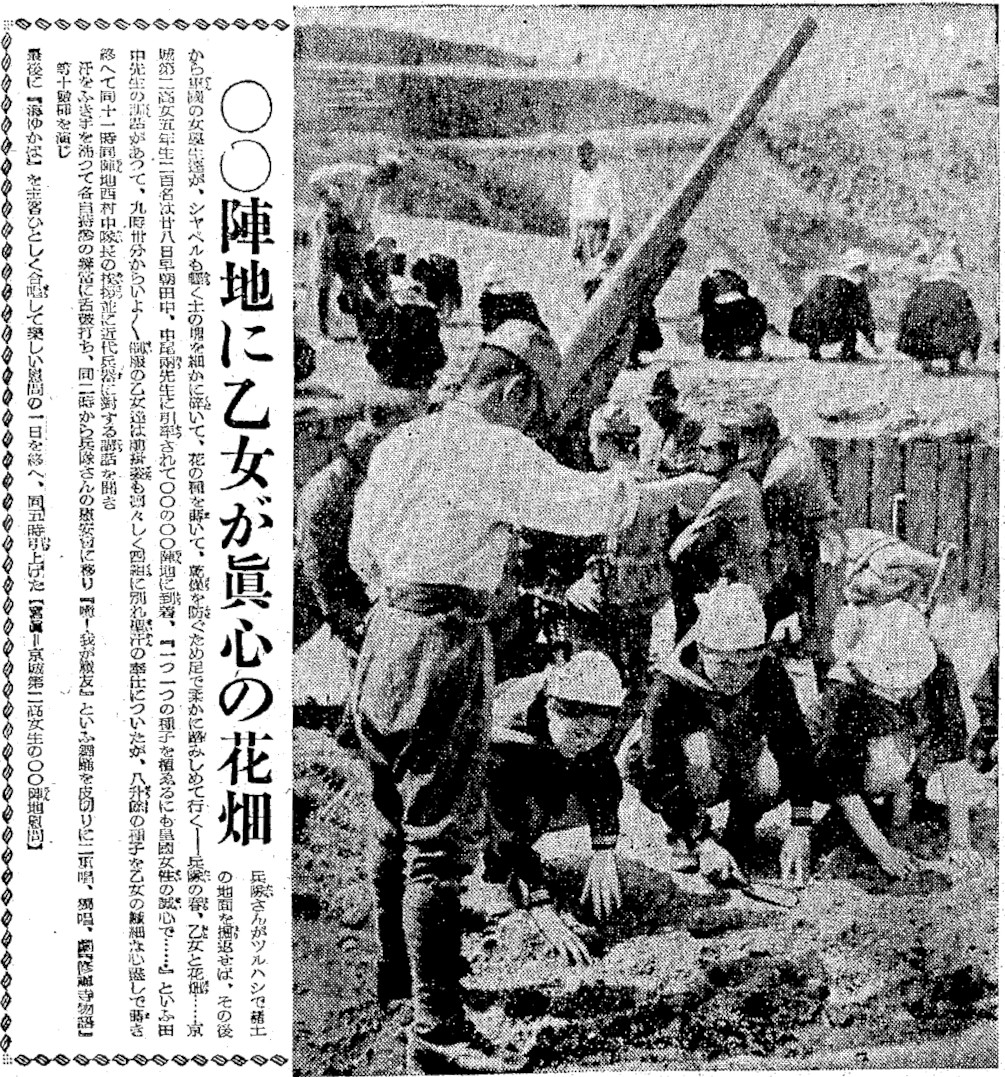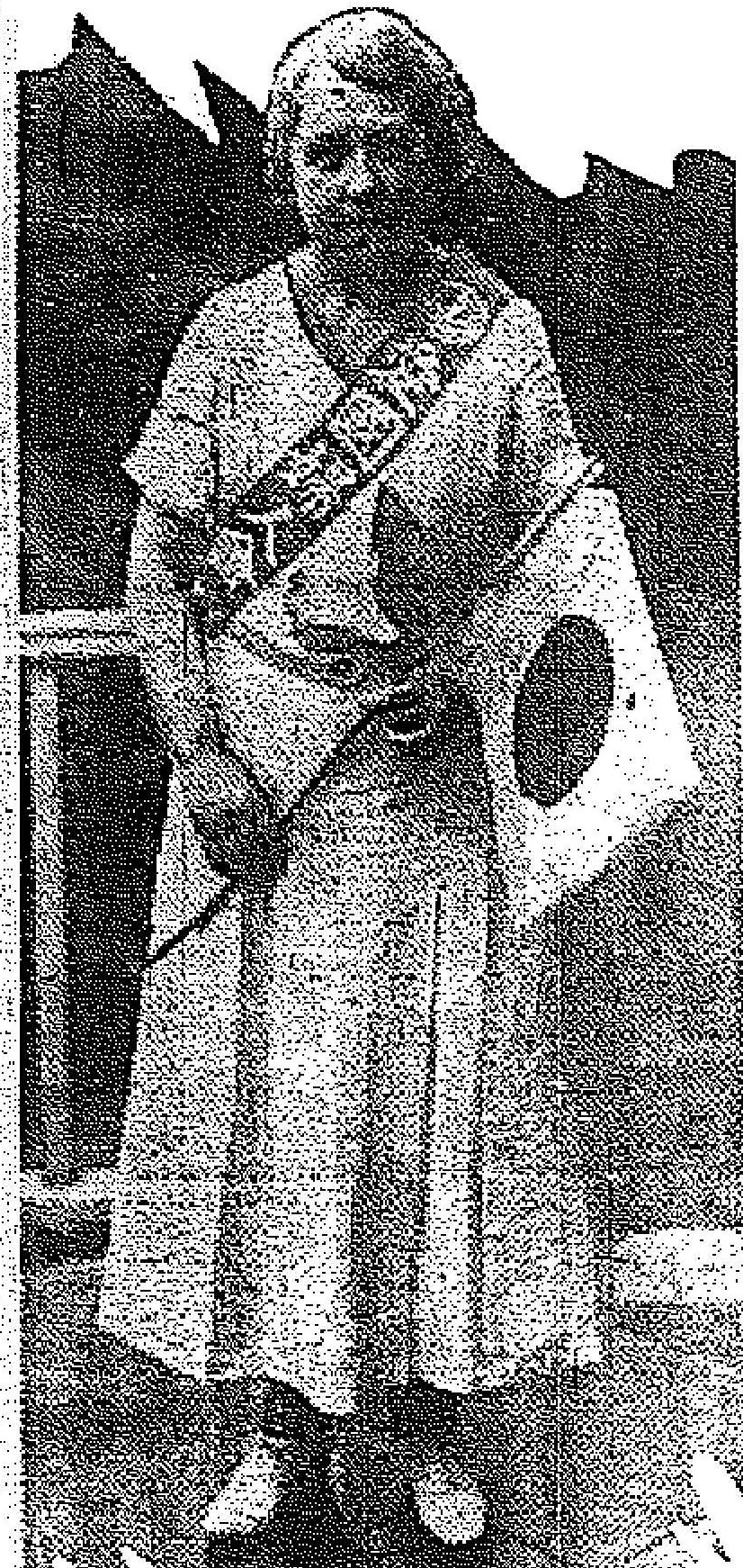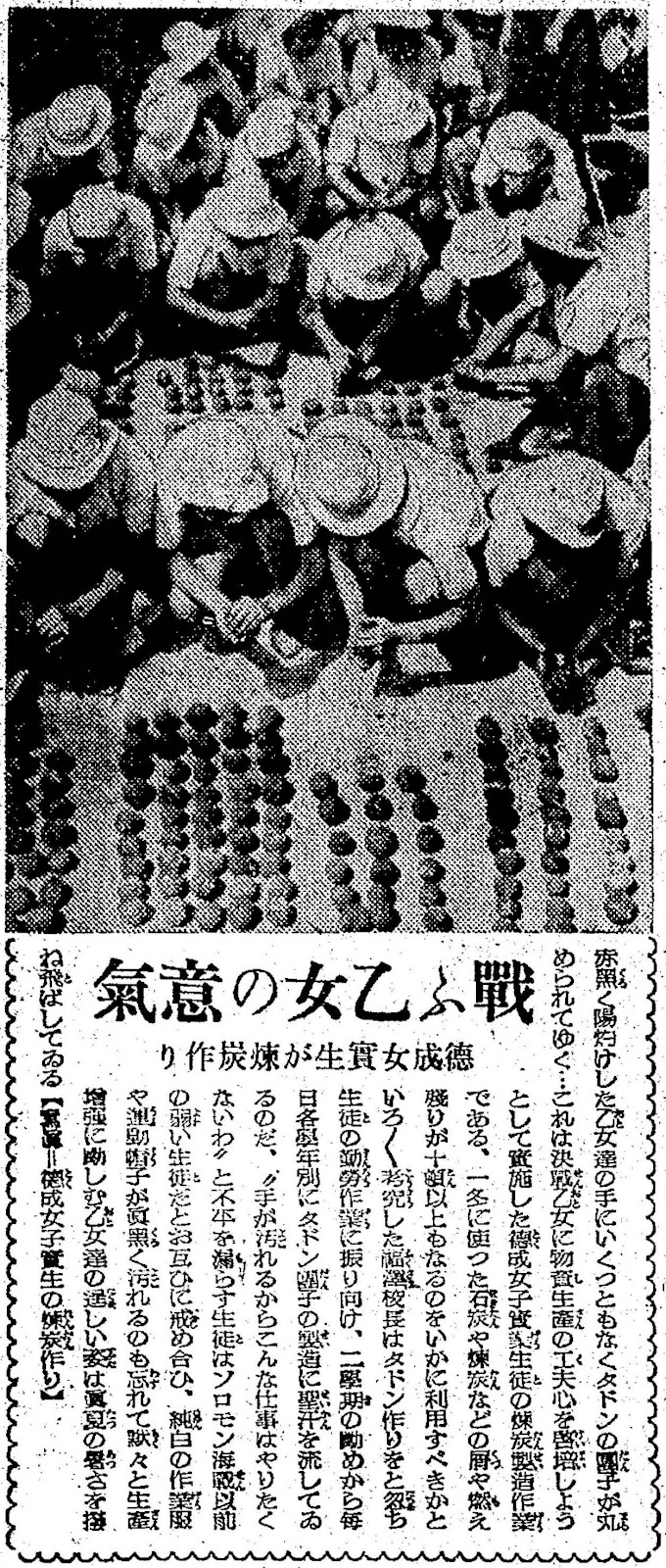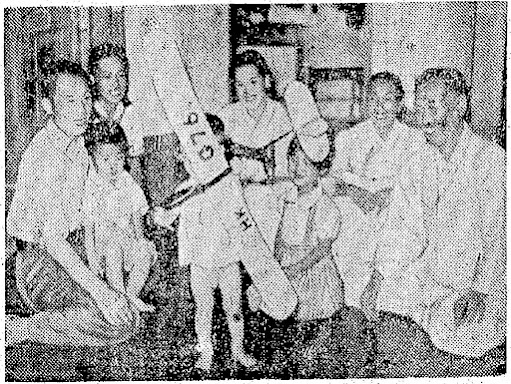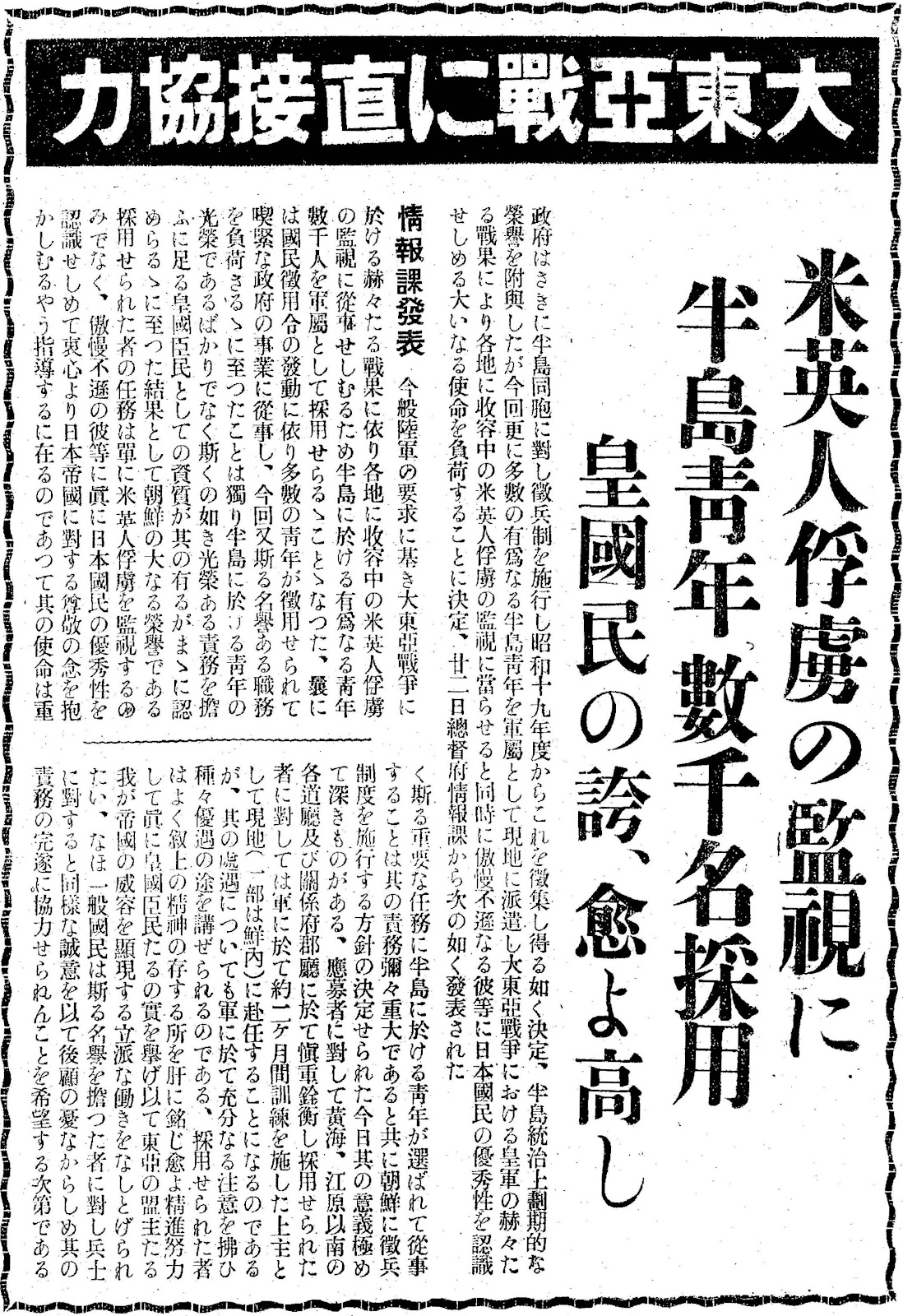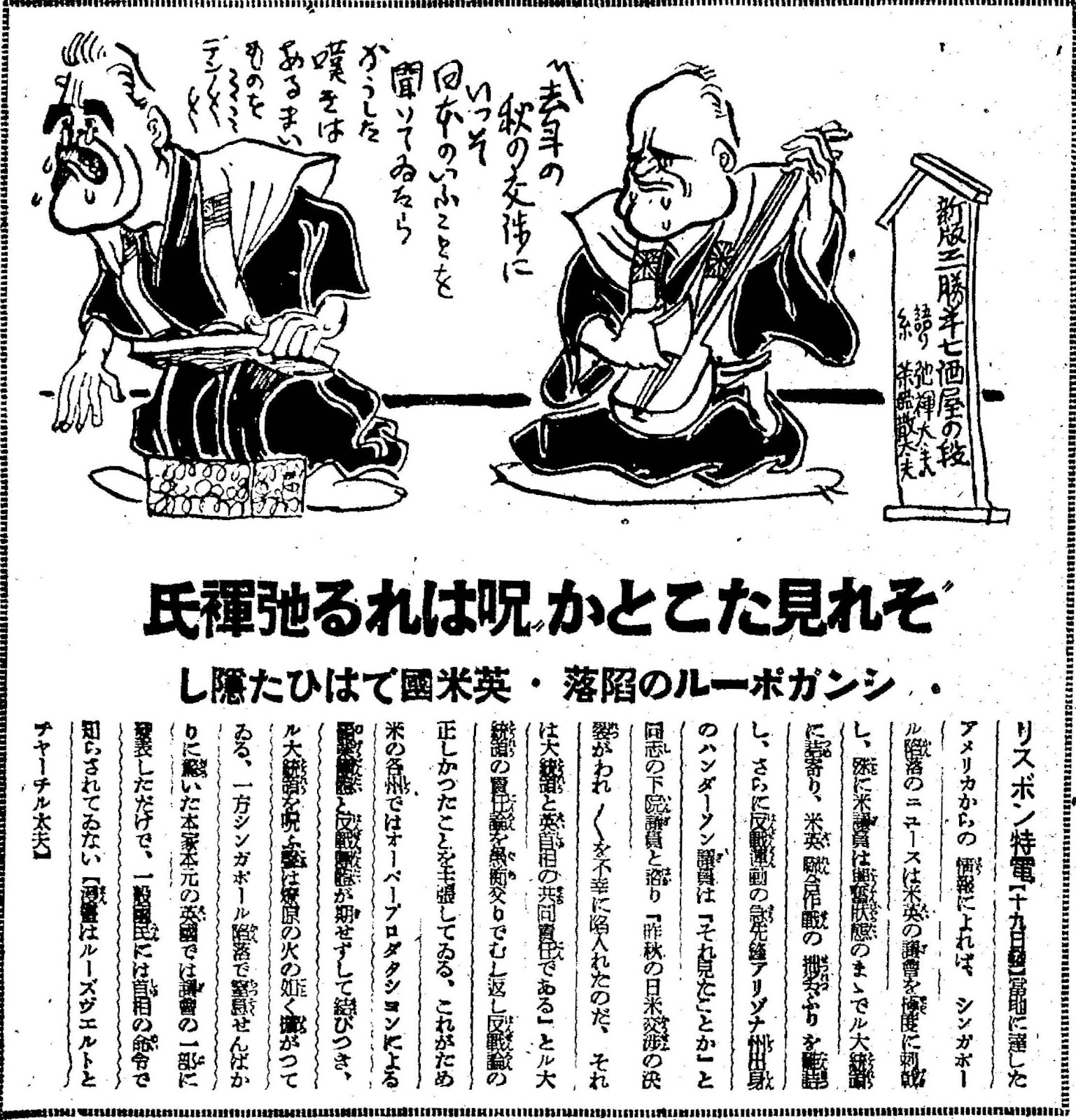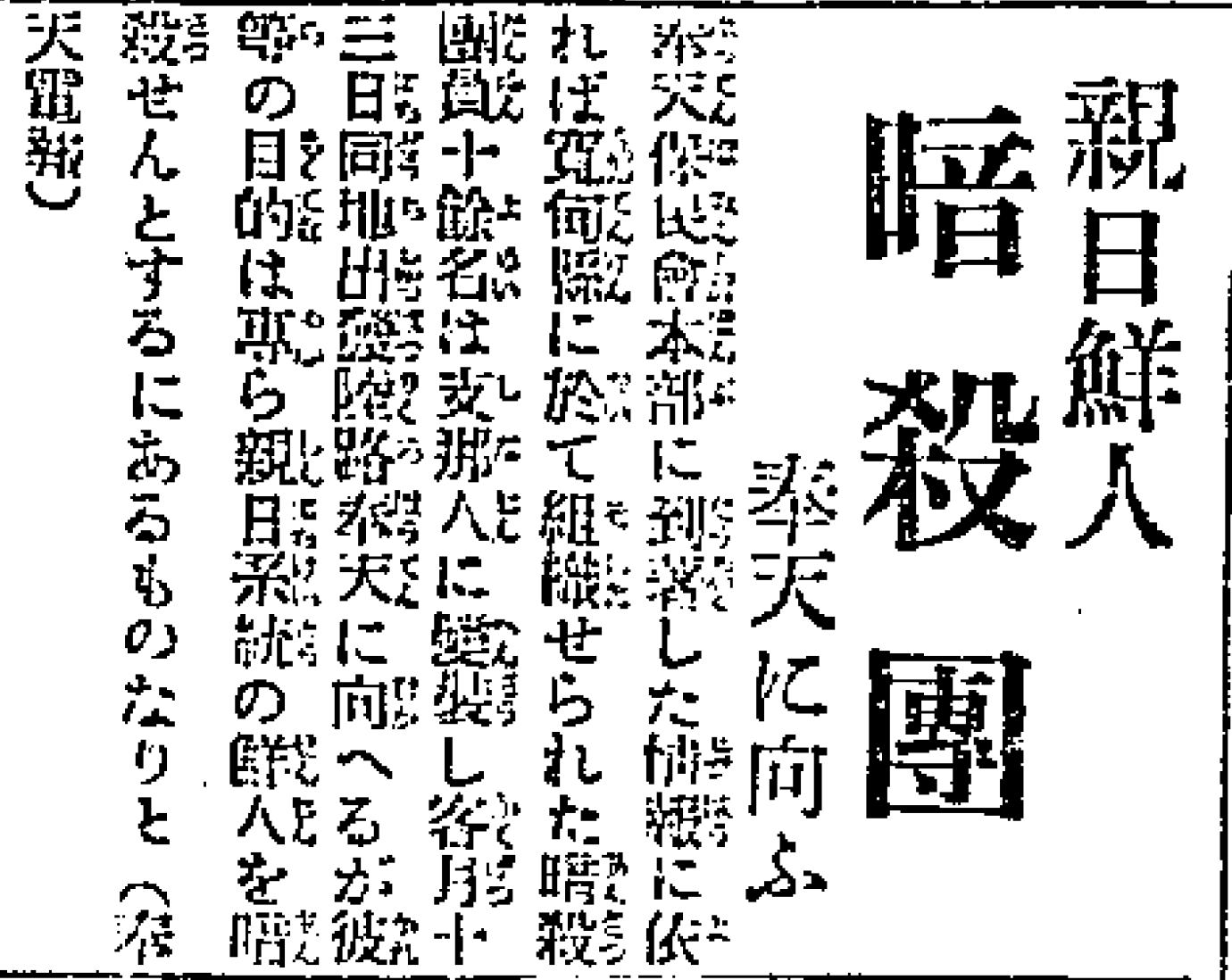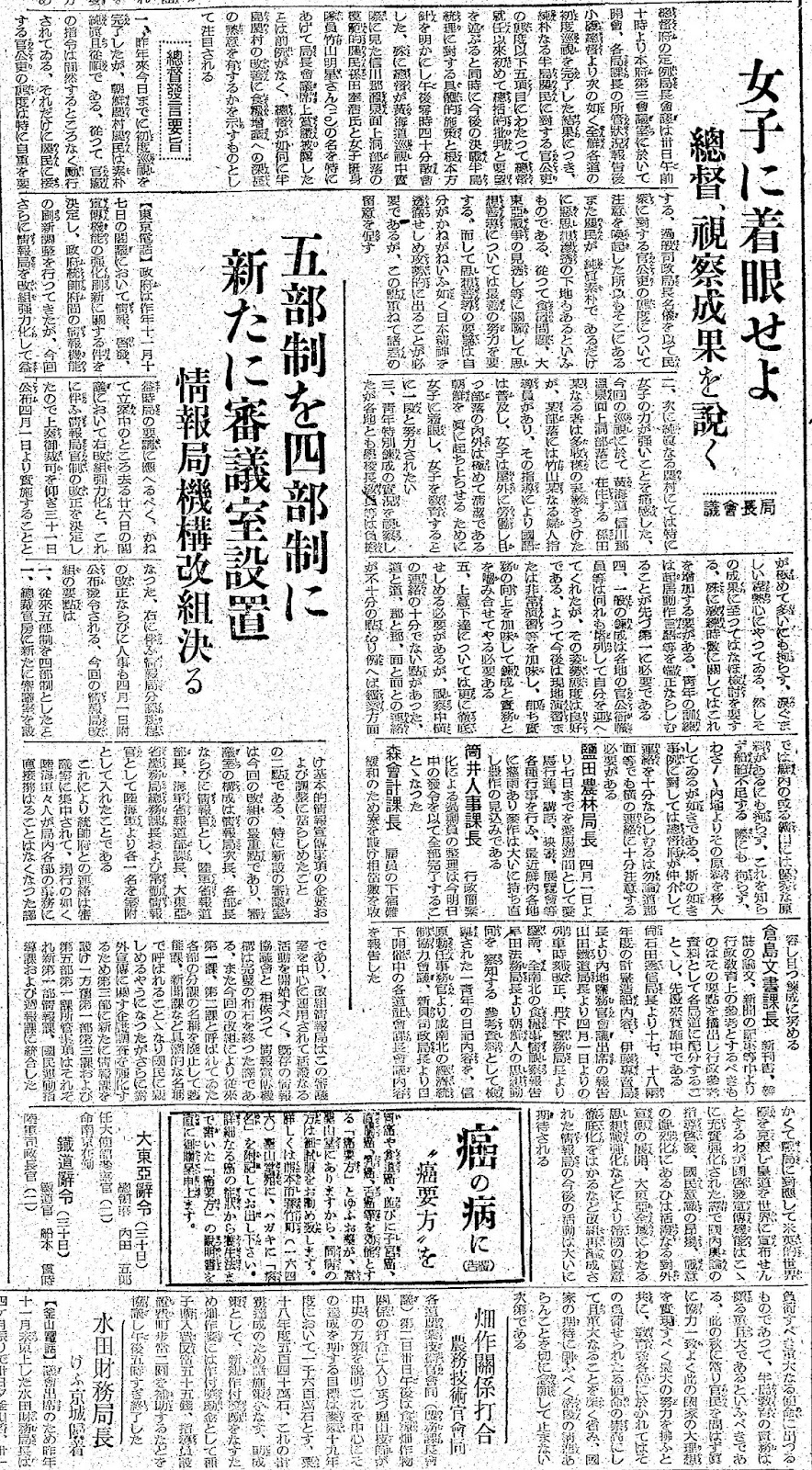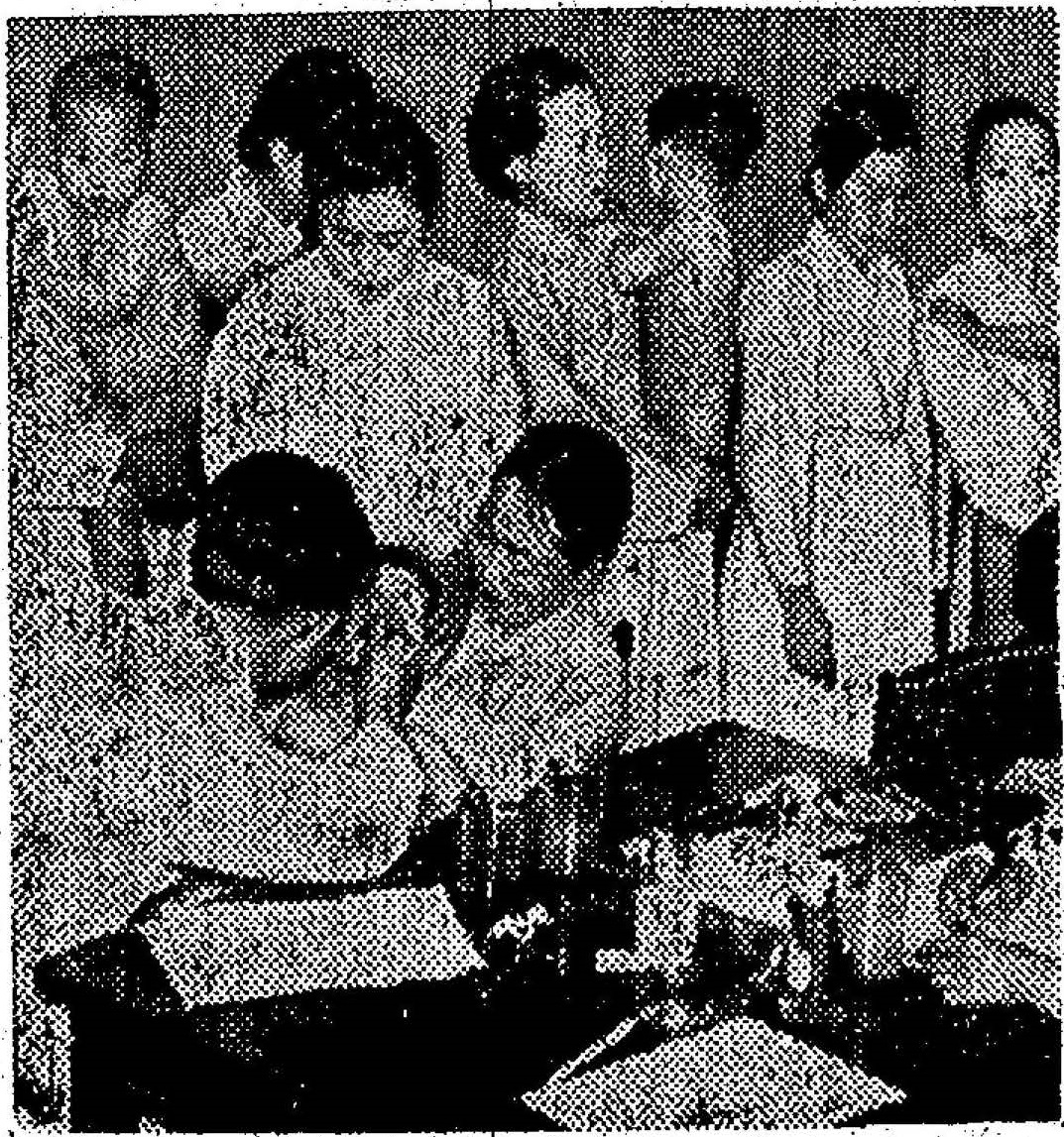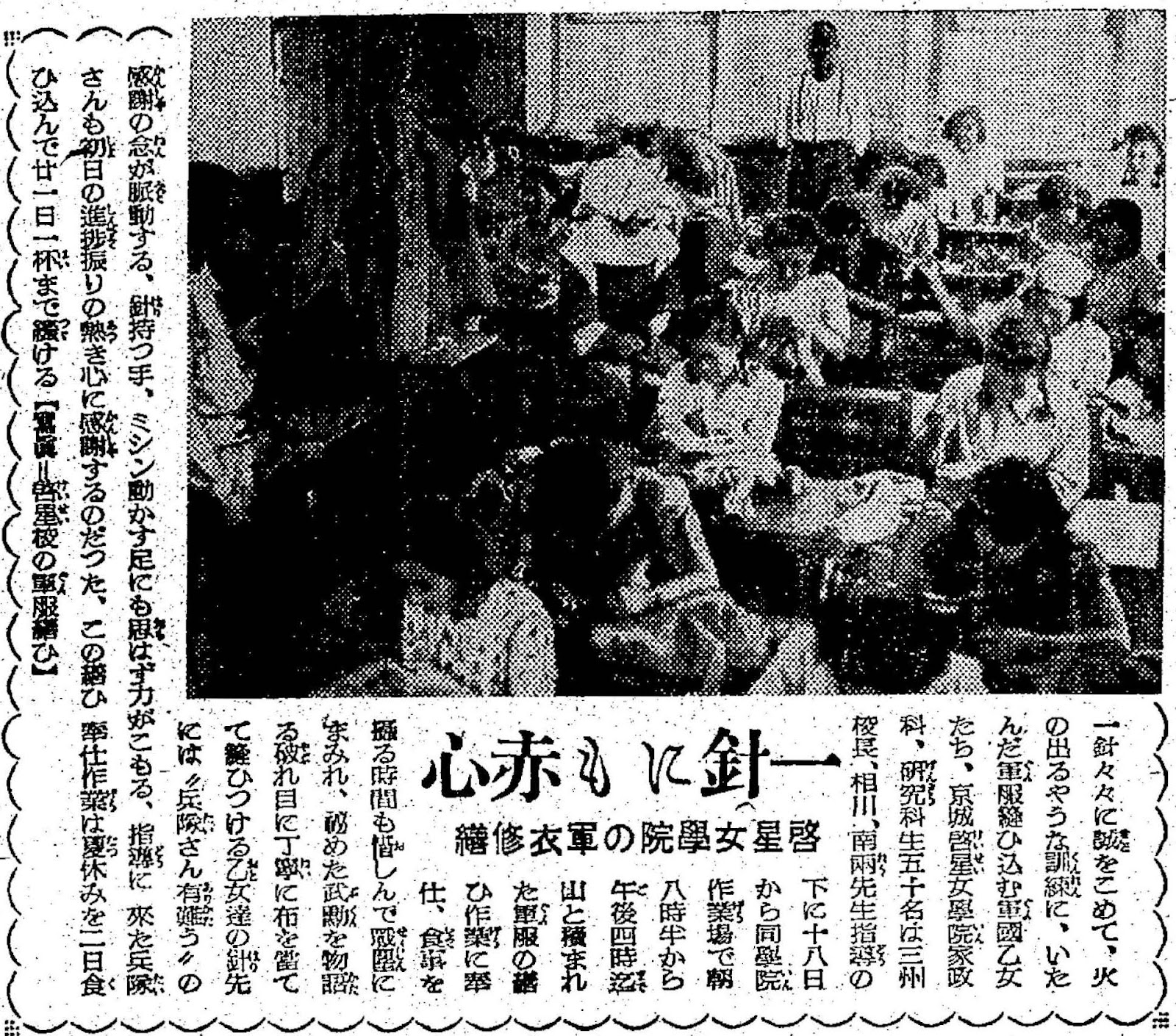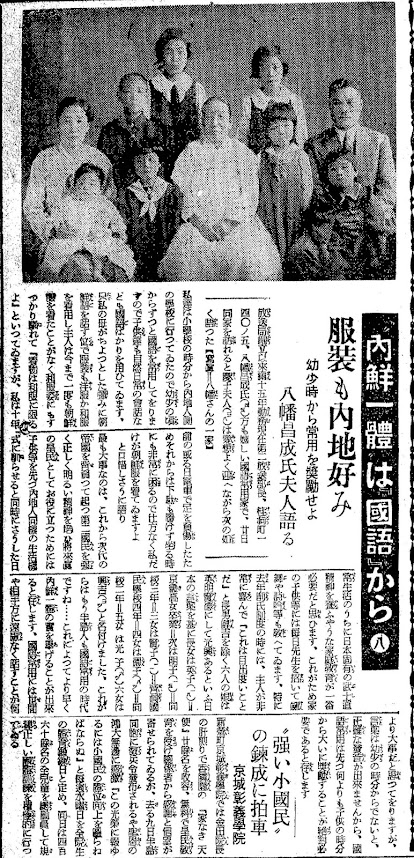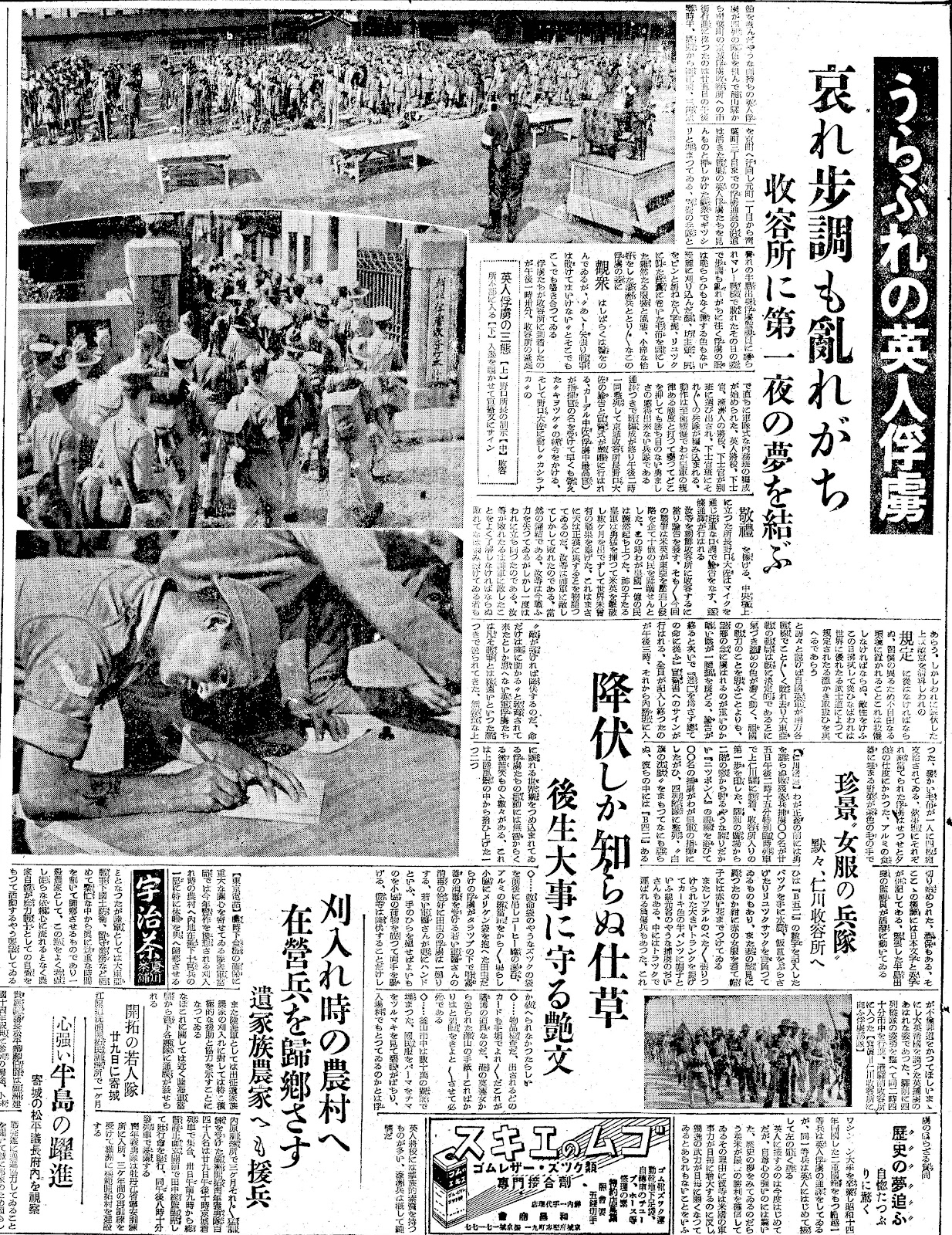Imperial Japan built Shinto shrines all over Korea in every eup and myeon, enlisting Patriotic Groups to “cultivate the worship of gods and faith in the Emperor” among Koreans and realize “the fusion of the Japanese-Korean family based on divine will”
It is April 1944, over two years into total war against the United States and Britain, and it is not going so well for Imperial Japan. Governor-General Koiso‘s office had made a big announcement on April 11, 1944 about plans to build Shinto shrines all over Korea in every eup (town) and myeon (township) that does not yet have one. This article is a follow-up speech by the colonial regime religiously justifying this action as a way to realize “the fusion of the Japanese-Korean family based on divine will”, and celebrating the lack of separation of state and religion in Imperial Japan. The speech calls upon every patriotic group leader to compel its group members to construct the shrines, all in spite of severe wartime material and labor shortages. It sounds crazy on many levels, but perhaps the superstitious war leaders thought that currying favor with the gods would somehow turn the tide in Imperial Japan’s favor.
Patriotic Groups (JP: aikoku-han, KR: aeguk-ban, 愛國班) were neighborhood cells which functioned as the local arm of the Korean Federation of National Power (国民総力朝鮮連盟, 국민총력조선연맹), the single ruling party of colonial Korea. Every Korean living in Korea belonged to a Patriotic Group. It typically consisted of a few households, led by a Patriotic Group leader, who normally acted as a mini-tyrant micromanaging the lives of everyone within the Patriotic Group. That included things like rationing food and goods, enforcing mandatory State Shinto prayer times and shrine visits, ‘volunteering’ laborers upon the colonial government’s request, arranging marriages, holding mandatory Japanese language classes, spying on ‘ideological criminals’, etc.
Koreans are immensely proud of their national and ethnic identity. Underestimating this was perhaps the critical mistake of the colonial authorities, who thought that maybe enough brainwashing and coercion would win the hearts and minds of the Korean people, and lead them to change their minds and become true Japanese people. But as we now know, the exact opposite happened. If anything, the mandatory shrine visits and other coercive tactics probably inflicted such humiliation and psychic trauma, that they radicalized an entire generation of Koreans into doubling down on their Korean nationalism, Christian faith, and anti-Japanese sentiments, the reverberations of which we still see today.
The issue of Shinto shrines is a particularly sensitive topic that can still evoke strong emotional reactions among both Japanese and Korean people. Many Japanese are still angry at the fact that the 1000+ Shinto shrines that were built in colonial Korea were all destroyed following the end of the war, starting with the Pyongyang shrine which was set on fire on August 15, 1945, the day Imperial Japan surrendered. Today, the only vestiges of the shrines in Korea are found in their ancillary structures, like the stairs. A statue of Kim Il-sung now stands on the former site of Pyongyang shrine.
(Translation)
Gyeongseong Ilbo (Keijo Nippo) April 21, 1944
Cultivating faith in the central principle of unity
One shrine to be built in each eup (town) and myeon (township)
Broadcast by Director Kojima of the Faith Division of the Korean Federation of National Power
In view of the announcement made by the Governor-General’s Office regarding the policy and measures to rapidly realize the vision of one shrine in each eup and myeon, Mr. Shizuo Kojima, Director of the National Faith Division of the Korean Federation of National Power, made a broadcast from the Seoul Central Broadcasting Station at 6:30 p.m. on April 20, requesting the sincere cooperation of patriotic group members to fully construct shrines as soon as possible:
“The fundamental difference between our nation and other countries is that our nation is united in its government and religion, while other countries have their governments and religions separated from each other.
The unity of government and religion means that government and religion are under the control of a single person, and that the government manifests the spirit of the religion as it actually is. In foreign countries, the priest presiding over religion is a completely different person from the head of state, who is the sovereign of the political system. Government and religion take two paths: the government that rules the here-and-now is completely different from the religion that governs the afterlife, and the two are often thought of as being in contradiction with each other.
In our nation, the Sovereign Sumemima-no-Mikoto inherits the blood lineage of the Great Ancestral Goddess Amaterasu, and at the same time, inherits the lineage of the Amatsu-gami, which is why he is referred to as the Living God. This point is particularly important, and this is the reason why both government and religion are controlled by one person. In our nation, in terms of management roles, the Prime Minister is the head of the cabinet in politics, and the Chief Priest in charge of religious rituals. (abbreviated)
It is indeed a matter of great joy that the Governor-General’s Office has announced the policy and measures for the rapid realization of the goal of one shrine in each eup and myeon. In accordance with this policy, the Federation is making preparations for the training of shrine workers who will serve in this capacity.
These shrine workers are not to be limited to shrine service, but are to play a role in educating and guiding the people of wide regions in their national faith, and at the same time, they are to set annual events and conduct all their daily activities with a focus on the Gods, to have an attitude of living consistently with the Gods in life and death, and to rely on the Gods in joyous and sad times. I would like everyone to wash their hearts and minds in the Mitarashi River that flows out of the shrines’ forests, to clear their minds in the wind of the pine trees, and to bow before the Gods and pray for the prosperity of the nation, peace in their hometowns, safety in their homes, and good bodily health.
The Gods of our nation are the essence of harmony between god and man, and the religious festivals should be held not in a rigid manner, but with a sense of solemnity and harmony. If the Gods are confused with the demi-gods (half-mortal, half-gods), or if we keep them away at a distance by showing too much respect and solemnity, then that is against the will of the Gods. The cause of the current calamity is the separation of man from god, the separation of family from nation, and the spread of the ideology of materialism. The only way to be saved is to return to the Great Way of the Gods.
Japan and Korea have the same ancestors and the same roots. Their spiritual lives have a common origin from the earliest times, and their cultural processes are also on the same track. We must be aware that the fusion of the Japanese-Korean family based on divine will is going to be realized as it was in the past. We must grasp the true spirit of this fusion, and fix the situation in this world. The war situation is becoming more and more intense, but I believe that by following the Great Way of the Gods, by devoting ourselves to the cause of reverence for the Gods and the Emperor, by being faithful to our ancestors, and by thoroughly practicing our devotion to the Gods, day and night, we should be able to end this calamity in a timely manner.
I am keenly aware of the urgent need to cultivate the worship of gods and faith in the Emperor on the Korean peninsula, which lacks faith in the central principle of unity. Let everyone in the Patriotic Groups cooperate in the construction of the shrines as quickly and fully as possible. Together, let us hope that this will be realized.”
Source: https://www.archive.org/details/kjnp-1944-04-21
(Transcription)
京城日報 1944年4月21日
中心帰一の信仰啓培
一邑面一神社、一神祠建立へ
小島総聯信仰課長放送
総督府はさきに一府邑面一神社、一神祠の急速な実現を期すべき方針とその措置を発表したが、国民総力朝鮮聯盟国民信仰課長小島倭夫氏は二十日午後六時三十分、京城中央放送局から放送し、一日も速やかに全面的神祠建設をなすため愛国班員の心からの協力を要請した。
我が国体と他の国とが根本的に相違する点は、我が国は祭政一致であり、他の国は、それが分離していることである。
祭政一致とは祭と政治とが上御一人によって総轄あらせられ、祭の精神が其の儘政治に顕現されていることである。外国に於いては、祭は之を宰る司祭と政治上の主権者たる元首とは全く別人であって、祭政は二途に出て現世を支配する政治と幽冥を司る祭とは全く別で、二つは全く分離していて而も両者は往々矛盾するかの如く考えられて来た。
我が国では畏れ多くも上御一人は皇祖天照大神の皇孫すめみまのみこととして御血統を承継遊ばされると同時に天津神より承けつぎ給える御継統をも、おうけ継ぎになっておいでになるが、故に現御神と申し上げるのである。この点は特に重大で祭政共に御一人より出ずる理由である。我国にも職制として、政治に於いては、内閣の主班に総理大臣があり、祭祀を司る役としては掌典長がある(中略)
総督府で一府邑面一神社、一神祠を目標にこれが急速なる実現を期し、その方針並びに施措が発表されたことは、実に御同慶に堪えぬ。これに伴ってこれにお仕えする奉務者の養成につき聯盟に於いて準備を進めている。
この奉務者については単なる奉務の域に止めしめず、広く当該地方における民衆の国民信仰の啓培指導の役割を果たさしむると同時に年中行事を定めて、日常万般の行事をすべて神中心に営み、死生一貫して神と共にある生活態度を持し、嬉しいにつけ悲しいにつけ神を頼りに生き抜き、鎮守の森から流れ出る御手洗川に心を洗って松吹く風に気を澄まして誰も彼もが、神前に額づいて国家の降昌、郷土の平和や家の安全や身の健康を祈るようにありたいと思う。
我が国の神々は神人和楽の本質とされ、決して堅苦しいものではなく、厳粛の中にも潤いがあり、和やかにお祭りが行われねばならぬ。かの鬼神と混同されたり、尊厳のあまり敬して遠ざかるが如きは神の御旨に反することになる。今次禍乱の原因を求めると、神と人とが懸隔し、家と国とが分離した丈に唯物功利の思想が跳梁した結果であって、之れを匡し救う道は唯一つ惟神の大道に帰一することである。
内鮮は元来同祖同根であって、信仰生活も亦太初より発祥を一つにし、文化の過程も亦軌を一にしている。天運循り、ここに神意に基く内鮮一家の融合は復古のままに具現することを自覚して、その真精神を把握し、この世局を修理固成せねばならぬ。今や戦局は愈々苛烈を極めて居るが、惟神の大道に則って、敬神尊皇の大義に徹し、崇祖の誠を致し日夜神祇奉斎の徹底を図ることにより、禍乱の戡定期して待つべきものありと信ずる。
ここに中心帰一の信仰に乏しい半島に神祇崇敬と天皇帰一の信仰を啓培するの急務なるを痛感する次第である。愛国班の皆様に於かせられても一日も速やかに全面的に神祠の建設に協力され、之が実現を共に共に期そうではないか。

